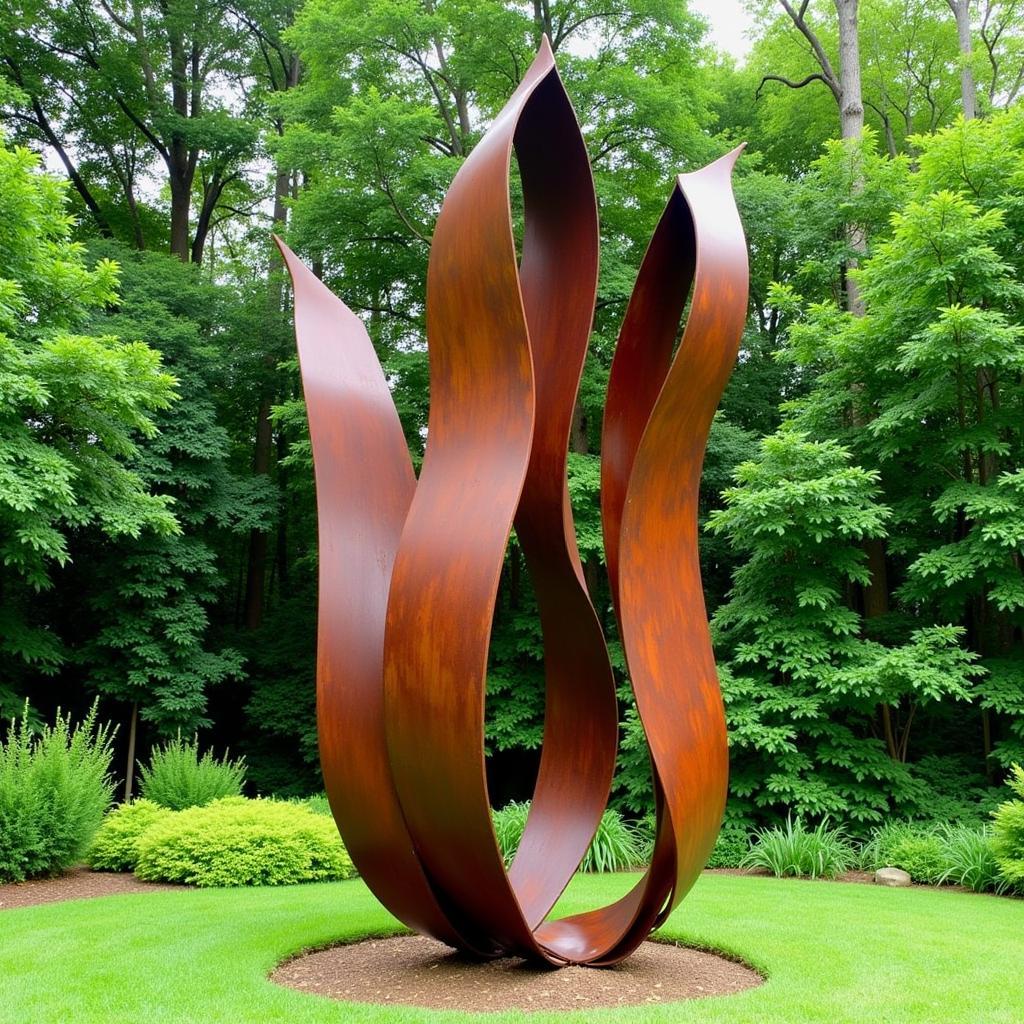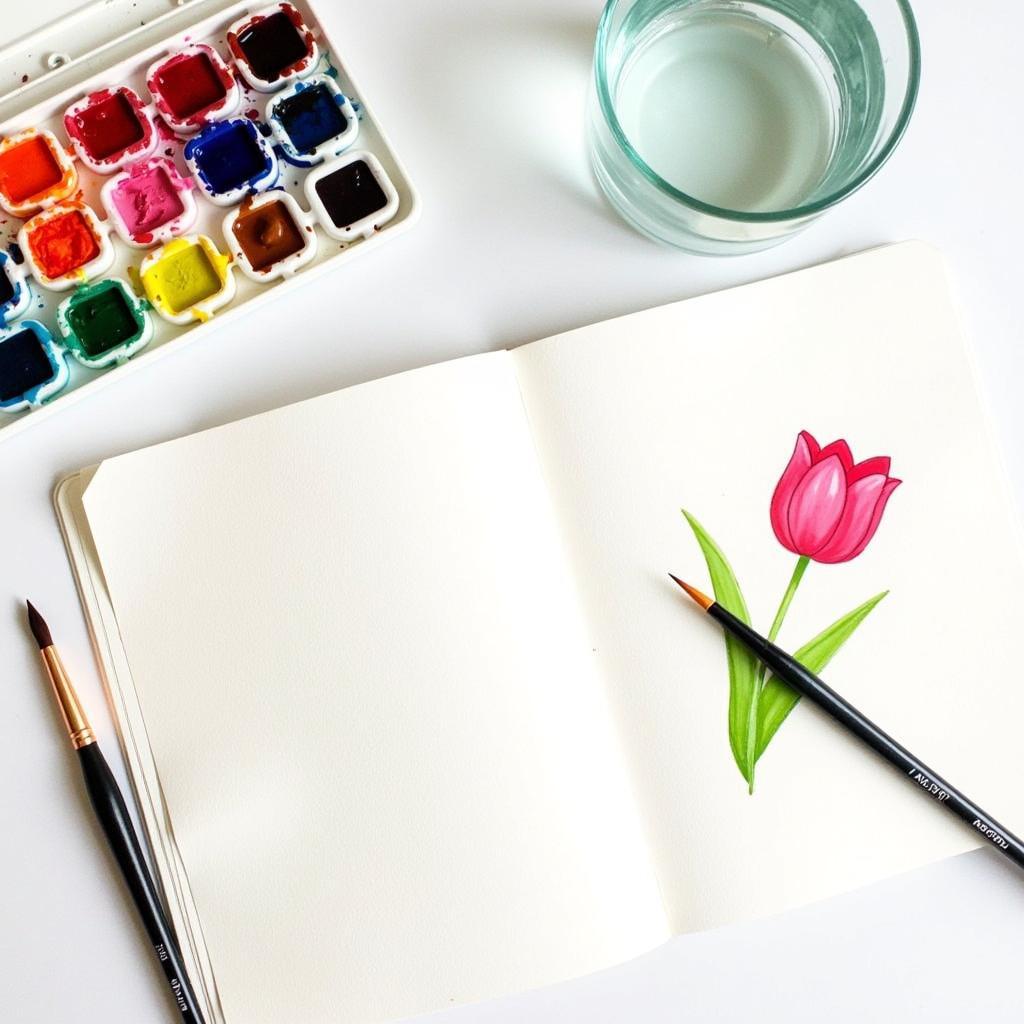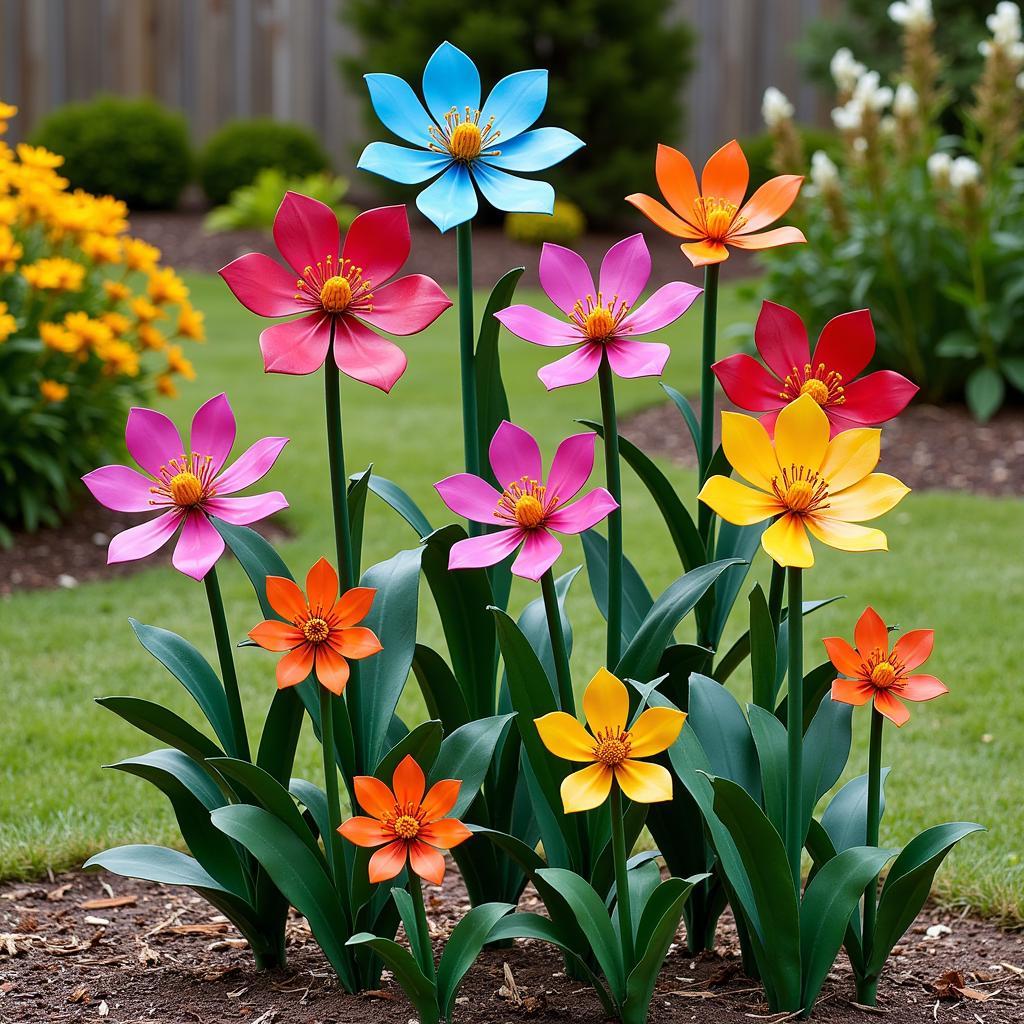Exploring the World of Tulips Art
From vibrant Dutch fields to contemporary art galleries, the tulip’s elegant form and vibrant colors have captivated artists for centuries. “Tulips Art” encompasses a diverse range of styles, mediums, and interpretations, offering a fascinating journey through art history and contemporary trends.
A Timeless Muse: Tulips in Art History
Few flowers hold such a prestigious place in art history as the tulip. Their journey begins in the Ottoman Empire, where these exotic blooms adorned luxurious textiles and ceramics. However, it was in the Netherlands during the 17th century that tulips truly blossomed as artistic subjects. The Dutch Golden Age saw an explosion of “tulipmania,” with these flowers becoming a symbol of wealth and status. Masterpieces like Jan van Huysum’s intricate still lifes captured the delicate beauty of tulips in meticulous detail, while artists like Rembrandt van Rijn incorporated them into portraits and landscapes.
Beyond the Canvas: Tulips in Diverse Mediums
The allure of tulips extends far beyond traditional paintings. Artists throughout history have explored the flower’s form and symbolism in various mediums:
- Sculpture: From delicate glass sculptures capturing the translucence of petals to contemporary metalwork reinterpreting the tulip’s sinuous lines, artists have found endless inspiration in this iconic flower.
- Textiles: Embroidered tapestries, woven wall hangings, and intricately patterned fabrics often feature stylized tulips, showcasing their versatility as decorative motifs.
- Ceramics: From Delftware tiles adorned with vibrant tulips to contemporary ceramic sculptures exploring abstract interpretations, tulips continue to inspire ceramic artists.
Modern Interpretations: Tulips in Contemporary Art
Contemporary artists continue to find inspiration in the timeless beauty of tulips, often using the flower as a vehicle to explore themes of nature, beauty, and ephemerality.
 Modern Steel Tulip Sculpture in a Public Garden
Modern Steel Tulip Sculpture in a Public Garden
- Abstract Expressionism: Artists like Georgia O’Keeffe revolutionized flower painting, transforming tulips into bold, expressive forms that transcended their botanical origins.
- Pop Art: Andy Warhol’s iconic screen prints of tulips epitomized the Pop Art movement’s fascination with everyday objects and mass production.
- Photography: Contemporary photographers capture the ephemeral beauty of tulips in stunning detail, often using macro photography to reveal the intricate textures and patterns of petals.
Bringing Tulips Home: Creative Ideas for Art Lovers
Want to bring the beauty of tulips into your own art? Here are a few ideas to inspire your creativity:
- Botanical Illustration: Capture the intricate details of a tulip using watercolor pencils or colored pencils. Focus on accurately depicting the flower’s anatomy, paying attention to the subtle gradations of color and the texture of petals.
- Acrylic Pour: Create a vibrant and abstract interpretation of tulips using the acrylic pouring technique. The fluid nature of acrylic paints lends itself well to capturing the organic forms and vibrant colors of these flowers.
- Mixed Media Collage: Combine various materials like paper, fabric, and found objects to create a textured and layered representation of a tulip. Experiment with different textures and colors to evoke the unique qualities of this iconic flower.
- Chalkboard Art: If you’re looking for seasonal spring chalkboard art ideas, consider incorporating tulips into your designs. Their cheerful colors and elegant shapes make them a perfect choice for springtime themes.
 Step-by-Step Watercolor Tulip Painting Tutorial
Step-by-Step Watercolor Tulip Painting Tutorial
Conclusion: Tulips – An Enduring Source of Artistic Inspiration
From the delicate brushstrokes of Dutch Masters to the bold expressions of contemporary artists, tulips continue to inspire and captivate art lovers worldwide. Whether you’re drawn to their historical significance, their vibrant colors, or their elegant forms, there’s no denying the enduring allure of tulips in art.
FAQs about Tulips in Art
1. What do tulips symbolize in art?
Tulips have held various meanings throughout art history, often representing wealth, prosperity, and love. However, they can also symbolize ephemerality, beauty, and the fleeting nature of life.
2. Why are tulips so popular in Dutch art?
Tulips arrived in the Netherlands in the 16th century and quickly became a symbol of status and luxury. During the Dutch Golden Age, “tulipmania” swept the nation, leading to an explosion of tulip imagery in art.
3. Where can I see famous examples of tulips art?
Museums like the Rijksmuseum in Amsterdam and the Metropolitan Museum of Art in New York City house impressive collections featuring tulips in art.
Explore More Artistic Inspirations
- Discover the beauty of flower poster art and how to incorporate it into your home decor.
- Find creative handprint mothers day art ideas featuring tulips for a heartfelt and personalized gift.
- Celebrate the season with inspiring easter word art designs that incorporate the vibrancy of tulips.
Looking for a unique artistic experience? Consider joining a latte art class in San Diego and discover the art of creating beautiful designs, perhaps even incorporating a tulip-inspired motif into your coffee creation.
Contact us for support at Phone Number: 02462573573, Email: [email protected] or visit us at Savico Megamall, 7-9 Đ. Nguyễn Văn Linh, Gia Thụy, Long Biên, Hà Nội 10000, Việt Nam. Our customer support team is available 24/7.





